
We love our seed-munchers in all their forms and shapes. It is so cute to see the way they strut on our lawns, the funny, suspicious look they give us when perched on our bird-feeders or the branch of a tree. This gives us so much joy.
To to celebrate the joy of cuteness, we’ve compiled 10 of the cutest birds in the world! Some you will recognize from your very own gardens and parks and some from other continents entirely. Birds so cute and unique that you may very well get the travel-bug that will make you spread your own wings and fly over to see them up close for yourself!
So the 10 cutest birds in the world are:
10. Tropical Parula (setophaga pitiayumi)

The tropical parula is a small warbler worth laying eyes on but you would have to venture south to the tropics, from northern Mexico down to central Argentina. They do however look very much like our Northern Parulas.
Tropical parulas have bluish-gray heads and upper parts. What makes them so noticeable is the yellow throat, chin, and breast that run all the way down to the creamy-white lower belly and undertail. Around their eyes and bill is a black mask, two white wing bars, and dainty, yellow legs. The female tropical parula doesn’t have the black mask and has less bright colors than her mate.
Tropical parulas feed mainly on insects and occasionally some berries. They forage at mid-level among canopies, nibbling bugs off the leaves. Like other songbirds, they also hover and fly out to catch insects midair.
9. Spotted Pardalote (Pardalotus punctatus)
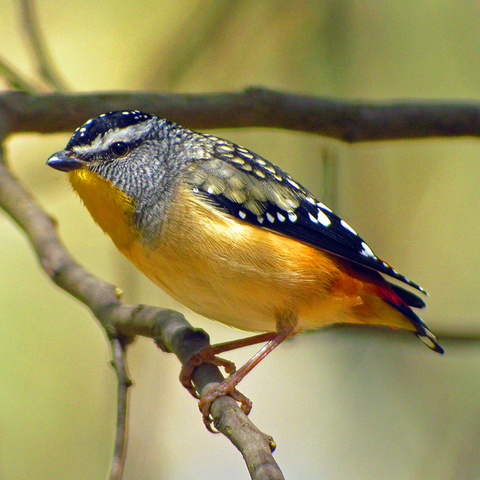
Flap your wings west and meet this tiny vibrant and colorful flyer who is one of the smallest birds in Australia! Also known as the diamond bird, pardalotes are about 3.1 to 3.9 inches long, have short stubby bills, bright red patches on their rumps and completely white eyebrows.
Pardalotes build their nests in long horizontal tunnels. They even excavate through the tunnels of rabbit burrows or potted plants. They build the nest with bark strips at the end of the tunnel.
Pardalotes eat invertebrates, especially psyllids (plant lice) from the leaves of the canopy of Eucalyptus trees. Unique in their looks, they have black wings, tails and heads covered with small, distinct white spots. Males have pale eyebrows, a yellow throat and a red rump. Females are similar but are slightly less colorful.
If you can’t get to Australia right now, the European Robin is no less cute!
8. Crimson chat (Epthianura tricolor)

The crimson chat is a species of a small bird found in Australia. I’m going to couple him with our beloved northern cardinal.
It is also known as the tricoloured chat, saltbush canary, and crimson-breasted nun.
This red bundle of joy is 4-5 inches long, about 0.4 ounces. The red covers their crown and belly whereas their backs and wings are charcoal grey, their throats are white and their eyes are brightly colored behind a black mask and a short downward curving bill.
These colors are particularly strong during the mating season and become muted when not breeding. The females look like the males before the breeding season.
Crimson chats hop and strut on the ground in open and arid areas. They are very resourceful. If a drought hits the land, and food is less available, meaning less insects and invertebrates, chats will create an irruption and fly to coastal areas. This is a rare occurrence, purely for survival.
7. Mountain Bluebird (Sialia currucoides)
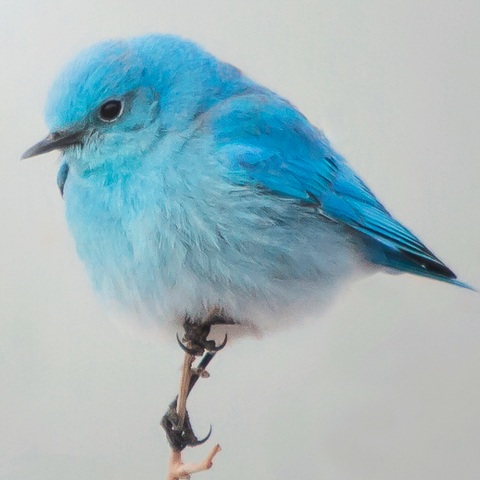
Mountain Bluebirds, also known as Arctic Bluebirds, are small thrushes abundant in North America. They are the state bird of both Idaho and Nevada.
Of course, the first thing you will notice is their vibrant sky-blue colour - which actually is a trick of the eye because it’s not pigmentation, but the angle of the light.
Bluebirds are usually perched on treetops, fence posts and powerlines. Most of their diet consists of insects and other bugs. When they hunt, they hover close to the ground, almost kestrel-like, then swoop down to nab a juicy bug.
Breeding season is from March to August. Mountain bluebirds look for any ready made cavities such as used woodpecker holes or rotted hollow tree cavities. If you want to see this beauty in your garden and you don’t have any natural cavities - you can buy or make a nest-box and place it in your garden. Eastern bluebirds only have 1-2 broods per year (as opposed to 2-3 with other bluebird species such as Eastern bluebirds) but they lay the most eggs (up to 8!) per species.
So once you place the bird-box near you, the bluebirds will settle in and you’ll have a big new blue family to brighten up your day.
Want to see the bluest bird in the world? Meet the Grandala coelicolor.
6. Goldcrest (Regulus regulus)
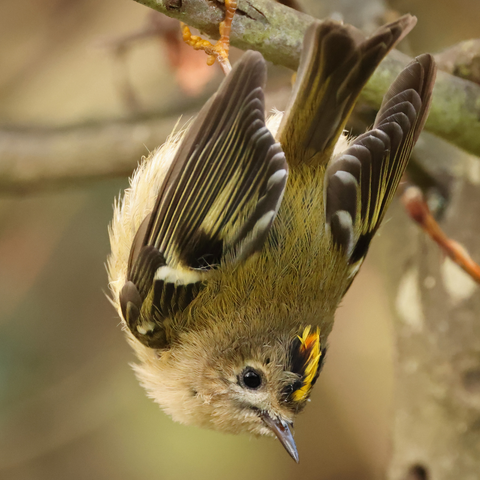
Hear ye! The King is coming!
Goldcrests are found all over Europe but some have been spotted in the Himalayas and Japan. The goldcrest would be equivalent to our North American ruby-crowned kinglet - except that the crest is not as bright and shiny.
This small songbird of the kinglet family was considered in European folklore to be the "King of the Birds", which is why its scientific name is Regulus (In Latin: king or knight.)
The goldcrest has greenish upper-parts, cream-white bellies, and two white wing bars. On his plain face lies the golden crown, accentuated with long black irises. Males have bright orange and yellow crowns and the females have yellow crests, colors that are most vibrant during the breeding season.
Goldcrests have a relatively high-pitched chirp compared with other passerines. So high that for some humans they are impossible to hear!
Early ornithologists could not believe that a bird of such a small size could migrate over such long distances. Some birds even cross the North Sea! They thought they rode on the backs of woodcocks or short-eared owls to migrate! But indeed these birds have a high stamina and can fly these lengths unaided. By the time they reach the end of their travels, goldcrests are so exhausted, they can even land on people!
5. Long-Wattled Umbrella Bird (Cephalopterus penduliger)

Or as I call him: Elvis.
This is a rare bird from the Cotinga family. They live in high altitudes and humid forests in the western parts of Colombia and Ecuador.
Their name is derived from the long, inflatable wattle on the neck of the male, which can be as long as 13 inches. This long wattle is covered in short, scaly feathers. The females, by contrast, have a reduced wattle of about half the size, and sometimes have none at all.
The males are about 15-17 inches in length, the females slightly smaller. Both sexes have short tails and carry an erectile head crest, what I like to call the Elvis hairstyle. Male head crests are slightly longer than those of the females.
Umbrella birds feed on fruit, large insects and occasionally small vertebrates like lizards.
These birds are under threat, partly because of their main predators, snakes and monkeys, as their large size makes them easy to spot. But the main reason is due to the loss of significant chunks of their natural habitats. Many umbrella birds have been shifted to protected areas.
4. Bee Hummingbird (Mellisuga helenae)

Only in Cuba will you get the chance to see the world’s smallest bird! The Bee Hummingbird ("zunzuncito" in Spanish for the humming sound they make) is one of 27 bird species endemic to Cuba. The length of the wee Bee is only 0.03 inches - which is about the size of a bumblebee! That’s super tiny. So small, they have the smallest amount of feathers in the world.
The bee hummingbird has 1260 heart beats per minute, which makes it the second fastest heart beat of all animals in the world after the Etruscan Shrew. Every few minutes, they hover in the air and sip the nectar of as many as 1500 flowers a day to maintain the colossal energy they need to keep going. They also feed on insects and spiders. They flap their wings 80 beats a minute and in courtship 200 beats per minute, flying as fast as 25-30 mph.
Bee hummingbirds live a pretty solitary life - but when breeding season begins, they gather in small groups and sing together to woo the females. The head, chin, and throat becomes bright red. And to top it all off, they make aerial displays while singing and finding the perfect light in which to show off their luster-red feathers.
Hummingbird mating dances are always a joy to watch:
3. Peach-faced love-birds (Agapornis roseicollis)

Let’s sail to South-West Africa, to the Namib desert, where you will find these abundant lovebirds in small flocks of 20-30, displaying their rich prism of colorful feathers. Also called rosy-faced lovebirds, these social birds come in a striking variety of gorgeous colors: yellow, violet, creamy-white or peach, all shades of blues and dark purples.
Peach-faced lovebirds have fetching personalities and can whistle and imitate sounds like parrots. They are goofy and basically - in addition to their striking plumage - just fun.
Females tear raw material into long strips, "twisty-tie" them onto their backs, and fly great distances back to build their nests.
When lovebirds sleep, they sit side-by-side and turn their faces towards each other. That’s high points on the cuteness scale!
And also, who wouldn’t want to be called “a peach-faced lovebird?
2. ATLANTIC PUFFINS (Fratercula arctica)

They may look like penguins but the colorful beak changes the whole story.
Nicknamed “clowns of the sea” or “sea parrots”, these small seabirds from the Auks family are mainly found in Iceland.
What makes them so unique is the bright orange and red beak placed smack in the middle of their heads. The more colorful the beak, the better chances of getting a mate. When the breeding season is over, the colors fade to grey.
Atlantic puffins are about 10 inches long, sport a black and white tux with thick feathers to keep them warm when swimming. And that is what they do pretty much all day. If they are not swimming, they are chilling on the waves, going with the flow. Flying… not their greatest trait!
When Atlantic puffins go hunting, mainly for fish or sand eels, they speed under the water at about 55 mph, flapping their wings at about 400 beats per minute, diving down to as much as 200 feet under the water although they only stay down there for about 20-30 seconds.
Puffins mate for life. The couples use the same burrow to dig their nests yearly, have only one egg per season and live long lives together - up to 20 years!
1. Cuban Tody (Todus multicolor)

This is probably the cutest bird you will see in the West Indies - definitely worth the trip! A bird that fits the palm of your hand, and is filled with so much energy!
With a head proportionately bigger than the rest of his body, the most distinguishable part is the bright lime-green plumage and rose-red colored throat complete with a touch of blue on the sides. Todies sport a flat bill for catching insects, their main source of nutrition.
And incredible insect catchers they are! In Puerto Rico, todies can catch up to one or two insects a minute, hunting from dawn to dusk. Their wings make a strong humming sound, like a hummingbird, which comes from the amount of wing flapping they do per minute.
Of course these are just a handful of the top cutest and adorable birds from all over the world. Choosing 10 for this list wasn't easy at all! What birds would you have chosen to add to this illustrious list?
Ready for some cute birds?
I found that if you want to attract amazing birds to your garden - bird feeders are the answer! Fill a feeder with a yummy mixture of seeds, sit back and enjoy the cuteness!
Click here to see our selection of high quality feeders that cute birds find irresistible!

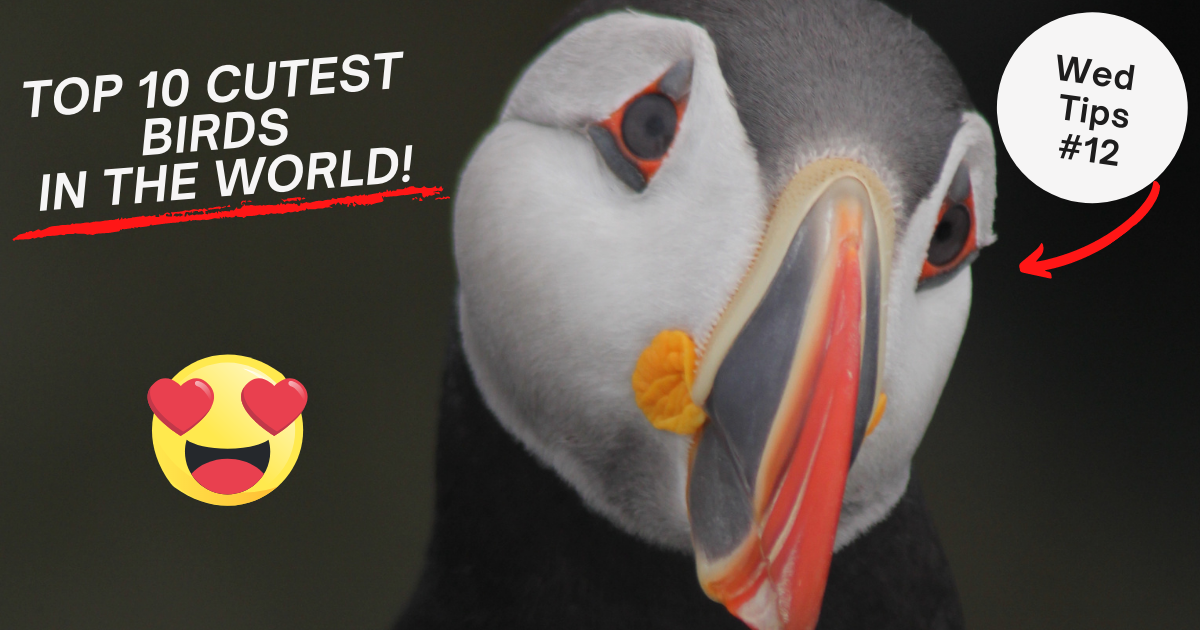
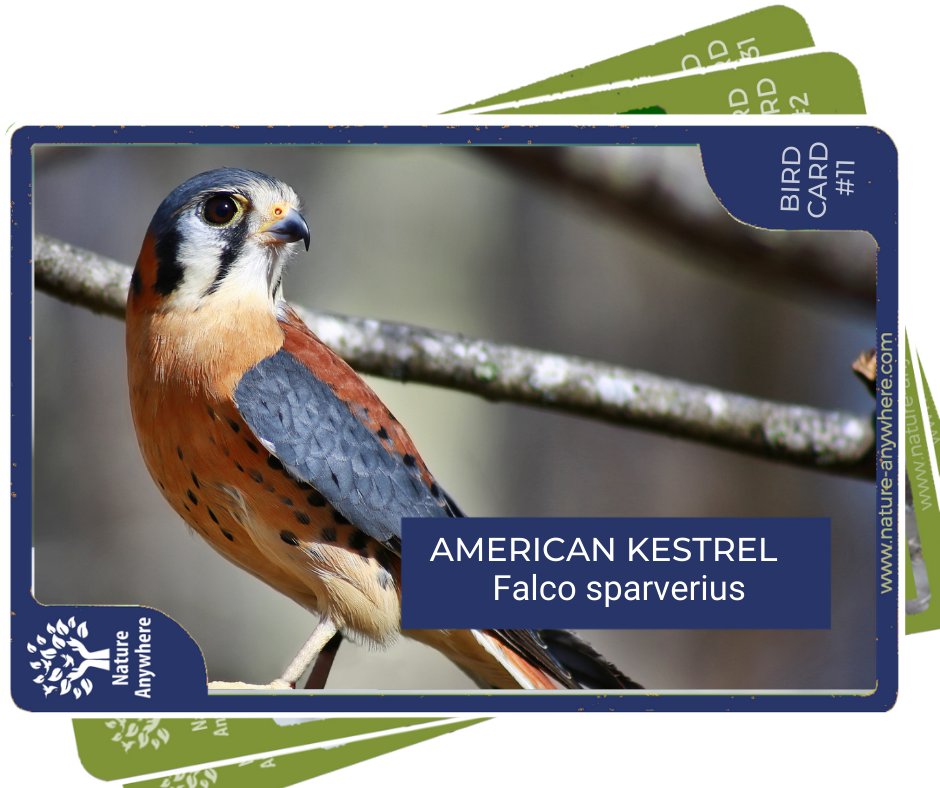
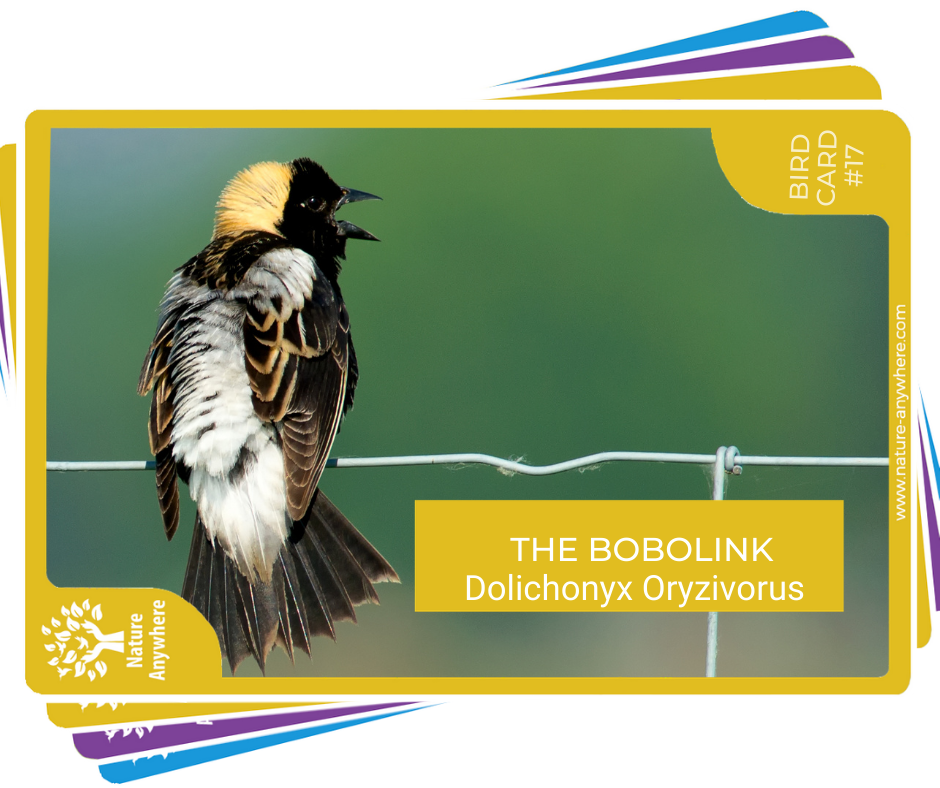
27 comments
theidioms.com
Wow, what a delightful list! 🐦✨ Birds really do have a magical way of brightening our day. I especially love how penguins made it onto the list — their waddling walk always makes me smile. If I could add one, I’d suggest the quokka’s feathered cousin, the quail — tiny, round, and absolutely adorable when they scurry around. Thanks for sharing such a cheerful post, it really did make my day! 🌸
tristan
this list blows
der
love it
Wini
you for the most cutest —shima enaga
Oli W
i looooove birds this was a good list. The blue bird was extra cute , consider me a fan I’m a common loon for birds!!! #birdenthusiast :))
Leave a comment
All comments are moderated before being published.
This site is protected by hCaptcha and the hCaptcha Privacy Policy and Terms of Service apply.